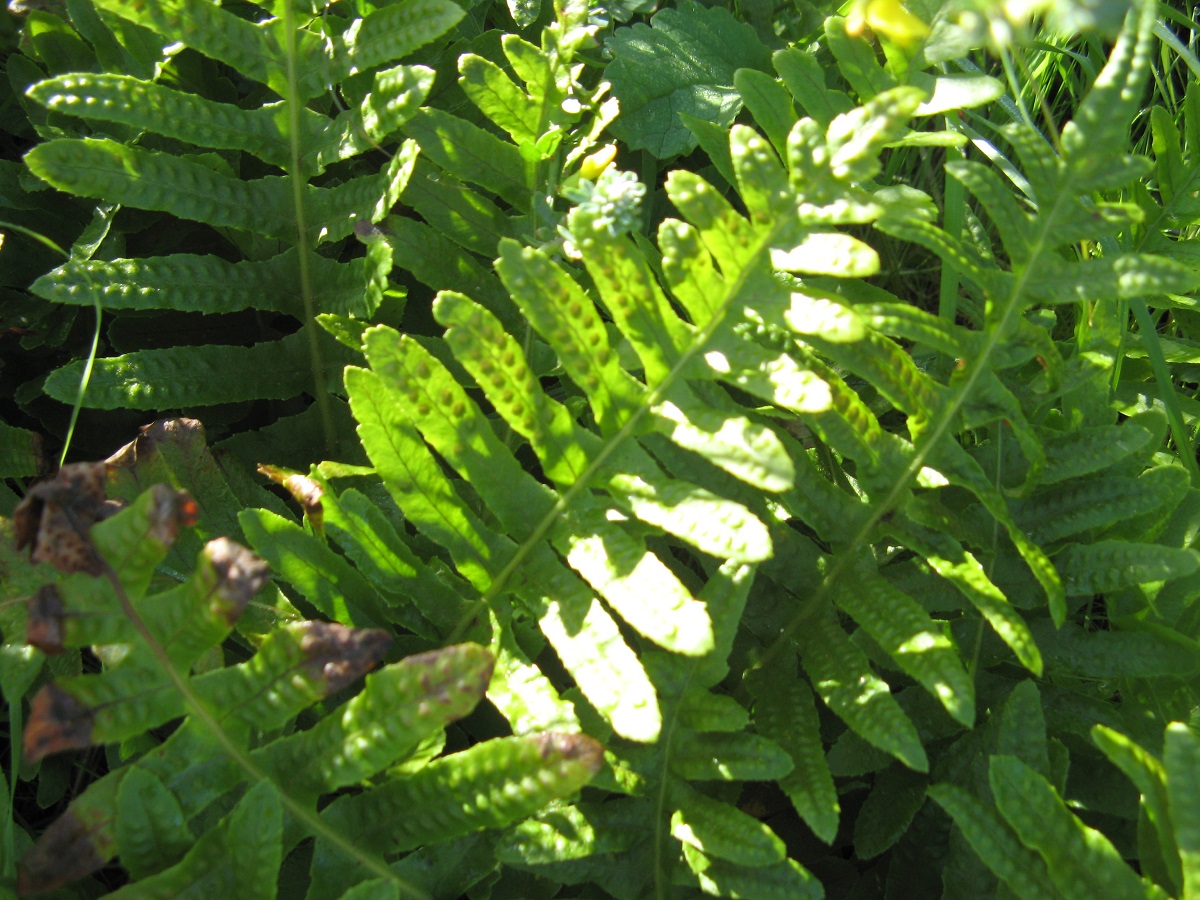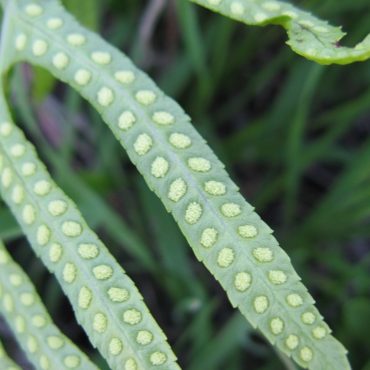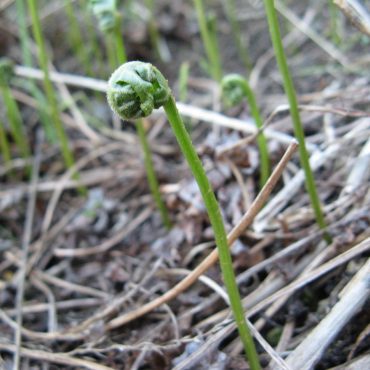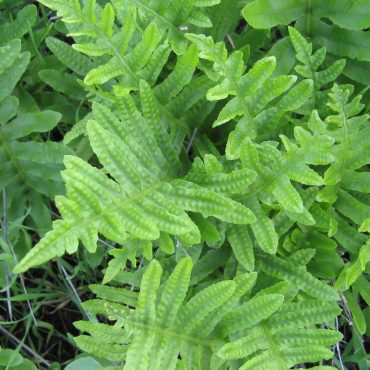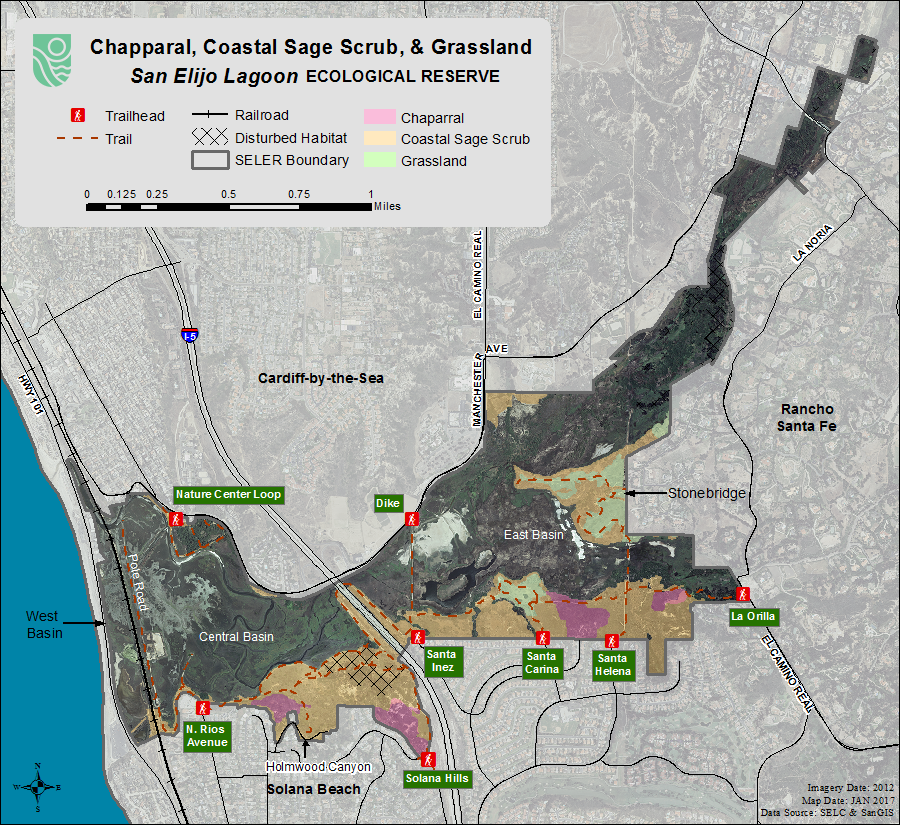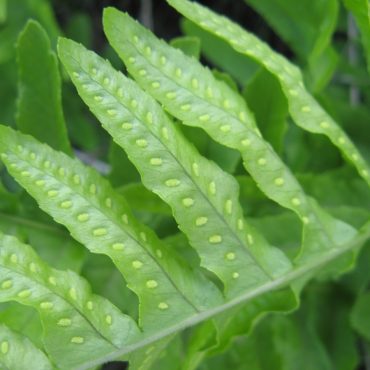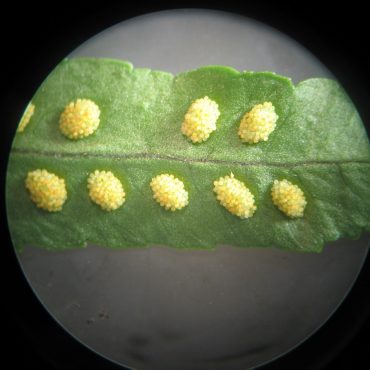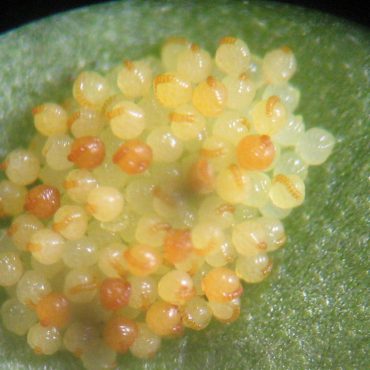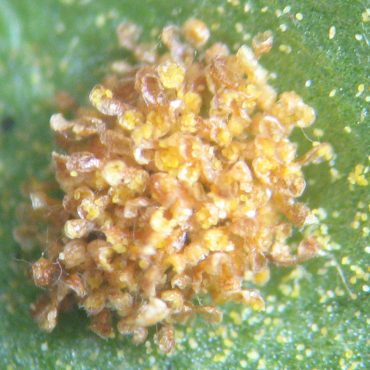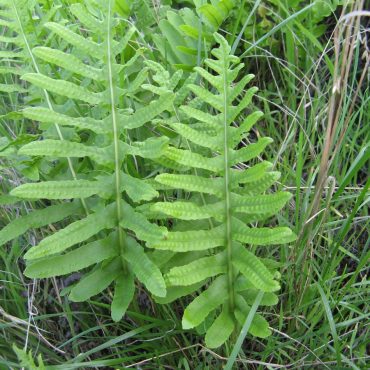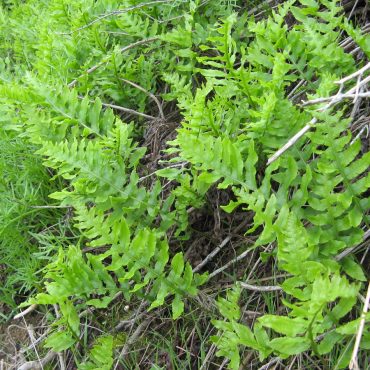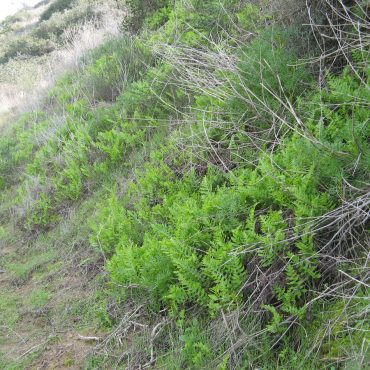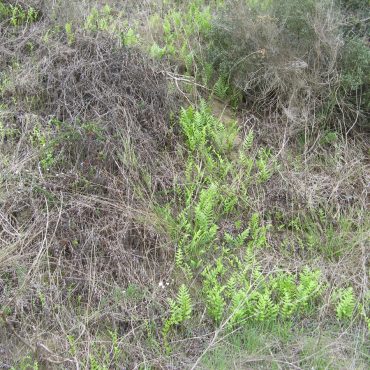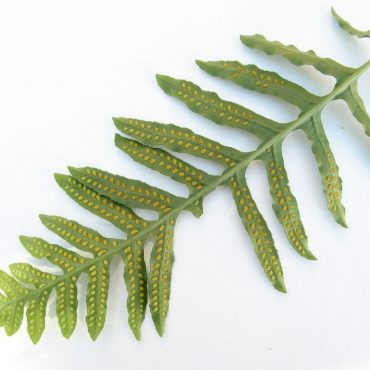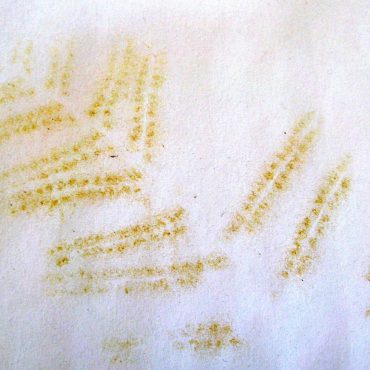Ferns are a primitive group of vascular plants. Their structure and reproductive cycle -and associated terminology- are unique.
California polypody is a perennial, drought-deciduous herb. The leaves (fronds) are produced, often singly, from a rhizome that runs horizontally at or near the surface of the soil. The developing frond emerges from the earth in a tightly coiled position (from whence it gets it’s name: fiddlehead), uncoiling as the frond matures. In California polypody, the mature frond is generally oval or triangular, less than 14 inches (36 cm) long and held above the soil by erect or spreading petioles (stipes) less than half the length of the frond. The midrib (rachis) of the frond is green and raised above the frond on both top and bottom surfaces. The frond is pinnately lobed, the lobes cut nearly to the rachis. The lobes tend to be alternate along most of the rachis, but may become more opposite near the base. Lobe margins appear smooth but close inspection reveals irregular, shallow serrations
On the lower surface of the mature frond are clear, globular, stalked structures (sporangia) about 1/16 inch (0.2 mm) in diameter. Within sporangia are produced tiny, one-celled, haploid spores. Spores of California polypody are yellowish, and the sporangia occur in regular, oval clusters (sori) on either side of the midrib; sori are 1/8″ (3mm) or less in length. Mature fern spores are released and distributed on air currents, and those few spores that find suitable shady, moist habitat give rise to the alternate phase of the fern’s life cycle – an inconspicuous plant called a prothallus. This is a flat heart-shaped green plant that lacks leaves, stems and roots. It less than 1/2 inch (1.25 cm) across. The prothallus produces the reproductive structures. An antheridea produces flagellated male gametes, and an archegonium produces a single female egg. To effect fertilization, a gamete must swim to an egg. If successful, a new diploid fern plant develops, deriving nourishment from the prothallus until it has developed its own roots. This dependence on water for sexual reproduction is one reason why ferns are associated with moist environments.220

